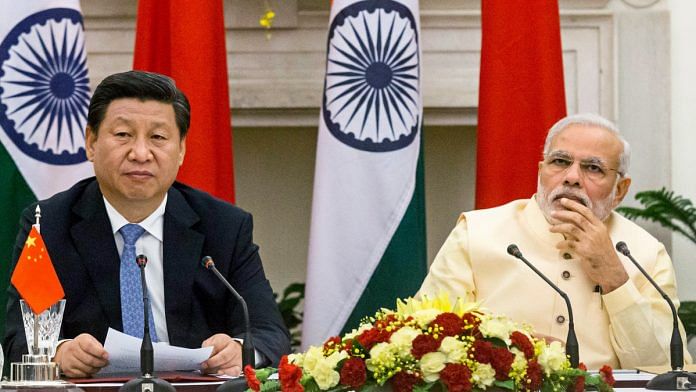New Delhi: India’s trade deficit with China has come down by $10 billion, from $63 billion in 2017-18 to $53 billion in 2018-19, a welcome development for the Narendra Modi government as the general election gets under way.
Trade deficit between two countries is the difference between the value of their exports and imports. The India-China trade deficit stems from the fact that India’s imports from China in 2018-19, for example, valued $53 billion more than what it exported.
“Whopping reduction trade deficit with China. Unprecedented. Exports increased substantially. Result of high level engagement, strategic planning,coordination with stakeholders,market research,sustained efforts,constant monitoring,hand holding with exporters #leadership @narendramodi,” said Commerce and Industry Minister Suresh Prabhu in a tweet Friday morning.
Although the India-China trade deficit registered a marginal decline a couple of times over the past 10 years, the fall has never been as much as seen in 2018-19.
It has narrowed on the back of India’s growing exports and contracting imports: While exports grew 30 per cent between 2017-18 and 2018-19 to $17 billion, imports contracted by 9 per cent to $70 billion.
The US-China trade war also helped, with Indian exports to China such as pharmaceuticals, auto components, plastic products and organic and special chemicals, besides agricultural products like soybean, rapeseed and sugar, picking up.
Also read: Traders can’t boycott cheap Made in China products because very little is made in India
Flooding Indian markets
The Indian government has been trying to reduce the trade deficit with China through efforts to increase market access for domestic agricultural products, animal feeds, oil seeds, milk and milk products, and pharmaceutical goods.
It had also imposed customs duty on several imports from China in its bid to rein in the trade deficit, which has ballooned from $1 billion in 2003-04 to $53 billion in 2018-19.
What has compounded the deficit problem is that while exports to China have only doubled in the last 10 years, imports from China have more than tripled in the same period.
The efforts to reduce trade deficit come at a time when Indian households have been flooded with Chinese imports, including quintessentially Indian goods such as sindoor and kolhapuri slippers.
India’s imports from China have risen at an astounding pace since Beijing joined the World Trade Organisation, which regulates trade between nations, in 2001: From $2.7 billion in 2002-03 to $76 billion in 2017-18. China’s share in total Indian imports has also risen: From 4.5 per cent in 2002-03 to 10.7 per cent in 2007-08 and 16 per cent in 2017-18.
Also read: India’s China policy is adrift, but Tibet & Dalai Lama can change that




Yes why not first increase it so much that things become worse and now trying to cut trade deficit with china and they are saying because Indians are doing Chinese boycott what A joke. I think it would be good to simply put all Chinese mobile phones in different gst bracket. There is nothing like trade war between us…we are not at any war with any country…
This is largely due to Indian citizens boycotting Chinese goods:
Please read:
https://www.quora.com/What-are-the-duties-of-the-public-to-help-in-increasing-the-Indian-rupee-currency-value-more-than-the-dollar-currency/answer/Suchindranath-Aiyer?prompt_topic_bio=1
AND
https://www.quora.com/Is-the-quality-of-products-made-in-India-better-than-those-made-in-China/answer/Suchindranath-Aiyer?prompt_topic_bio=1
Heartening. India should use its substantial trade deficit with China as a lever to prise open markets for goods / services where we are competitive. Some variant of the rupee trade with the Soviet Union could be thought of. Also creates an incentive for Chinese tourists to visit India and spend those stacks of non convertible rupees …